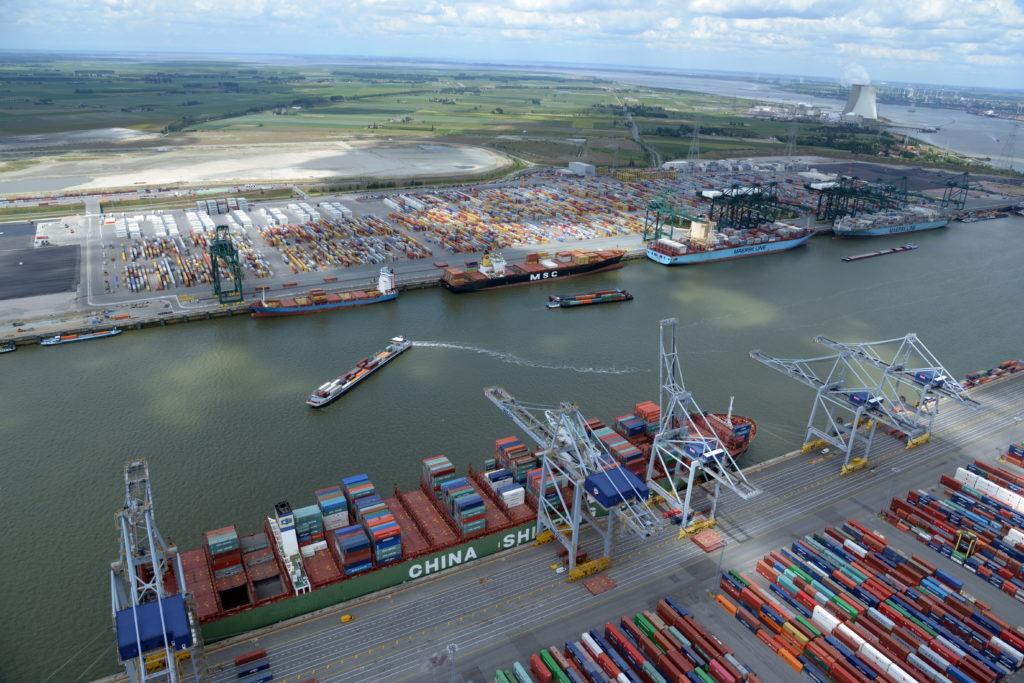
For many years, Canadian federal governments have been attempting to reduce the country’s overwhelming reliance on its giant neighbour to the south as an export market through trade diversification strategies.
Today, the U.S. still accounts for about 75 per cent of Canada’s total exports versus 84 per cent in 2002. But ports on the east and west coasts as well as in the Great Lakes/St. Lawrence waterway are now benefitting from more business and new global shipping lines stimulated by free trade agreements signed in the past few years.
Two major free trade accords in the past two years give Canadian exporters close to full tariff-free access to a total market of more than one billion people in the 28-country European Union and in the Trans-Pacific region. Implemented since September
2017, the Comprehensive Economic and Trade Agreement (CETA) allows
Canadian exporters to tap into a market of 512 million people across the Atlantic.
The so-called Comprehensive and Progressive Agreement for Trans-Pacific Partnership, concluded in early 2018 with 11 countries including Japan (but not China and the United States) represents a market of 495 million consumers.
On the West Coast, thanks to rising trade with Asia, such carriers as Hapag-Lloyd and MSC have been expanding their services to Vancouver, Canada’s largest port, and Prince Rupert – sparking record volumes in containers and certain bulk products.
The world’s biggest container shipping firm, Maersk Line credits the potential business CETA offers as the key reason for recently bolstering its services with eastern Canadian ports.
“Confident even in the early days of CETA’s implementation that it would act like favourable wind in both directions, Maersk Line decided to add our own operated string connecting Montreal and Halifax with the Mediterranean,” Jack Mahoney, president of Maersk Line Canada, said in an interview. He added that the Med/Montreal Express
service “offers Canadian exporters and importers another option to the Mediterranean that uses Canadian ports rather than U.S. ports.”
Hamburg-Sud also recently introduced a new service linking Montreal to the Mediterranean. Such developments fuelled records in both total and container cargo for the Port of Montreal in 2018. Overall cargo reached 39 million metric tons while container traffic increased by 9 per cent to 1.6 million 20-ft equivalent units (TEUs).
The port attributes the strong performance to a large degree to “the dynamic economic ties between Canada and the European Union, strengthened by CETA.”

According to Global Affairs Canada, latest available figures show Canadian exports to the EU up by 3 per cent while imports from the EU are up 13 per cent – suggesting that Canadian exporters must take diversification more seriously. Interestingly enough, Germany has emerged as the EU country that exports the most to Canada ($18 billion). The UK remains Canada’s leading European trading partner, but is losing ground amidst the growing business uncertainty over Brexit.
Eyeing prospects of European trade with the Great Lakes and St. Lawrence region, Amsterdam-based Spliethoff five years ago launched the only scheduled liner service, the Cleveland Europe Express, to and from the Great Lakes. Its multi-purpose vessels carry containers, bulk and project cargo and call on a spot basis at ports like Thunder Bay, Trois-Rivières and Valleyfield.
Valleyfield, on the St. Lawrence Seaway near Montreal, was also recently selected by Hamburg-based Compass Logistics to inaugurate a new monthly service to and from Rotterdam, Europe’s biggest port. “As a result, we expect to see an increase in general cargo trade with Europe in 2019,” says Jean- Philippe Paquin, general manager and CEO of the Port of Valleyfield.
Canada’s largest Great Lakes port in Hamilton is also seeing the positive effects of CETA on cargo flows.
“For us, the first impacts of CETA are showing up in the form of increasing volumes of Ontario-grown corn being exported to Europe,” notes Ian Hamilton, president and CEO of the Hamilton Port Authority. “Corn exports through the Port of Hamilton more than doubled, from 483,751 metric tons in 2017 to 1,159,366 metric tons in 2018.”

Ian Hamilton, CEO of Hamilton Port Authority
Hamilton stresses that the port’s growth in corn tonnages forms part of a broader trade diversification trend.
Overall, more than 3 million metric tons of cargo was exported through the Port of Hamilton in 2018, a number that increased by 64 per cent over 2017’s export total.
The Port of Hamilton is now home to three grain export terminals, operated by Richardson International, Parrish & Heimbecker and G3 Canada Ltd., creating some of the best export capacity in Canada.
“Our role is to ensure we have the trade-enabling infrastructure in place to allow Canadian businesses to be nimble, and seize new opportunities as they arise,” Hamilton explains.
And referring to the steel and aluminum tariffs introduced by the Trump administration, he concludes: “As the U.S. turns inward, attracting retaliatory tariffs as a result, Canadian exporters have benefited from our country’s free trade orientation.
Through agreements like CETA, we are diversifying our markets and growing a more resilient economy.”